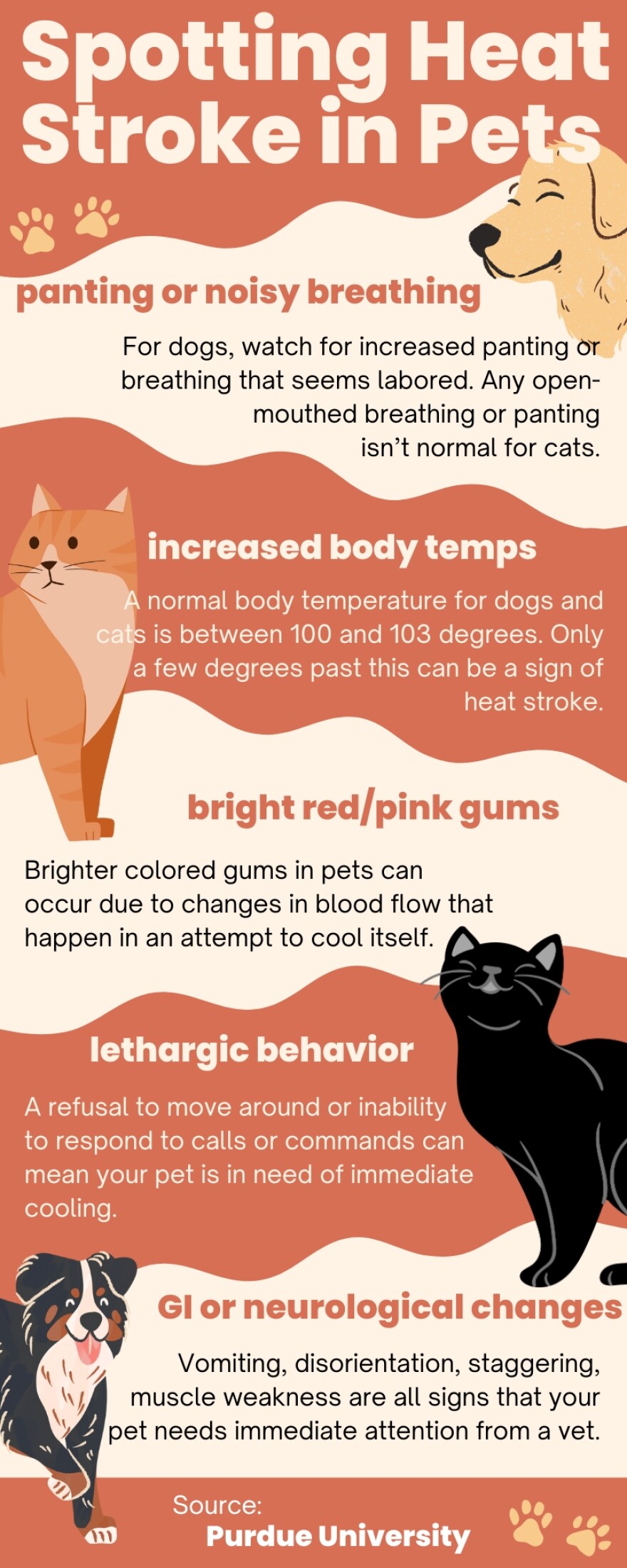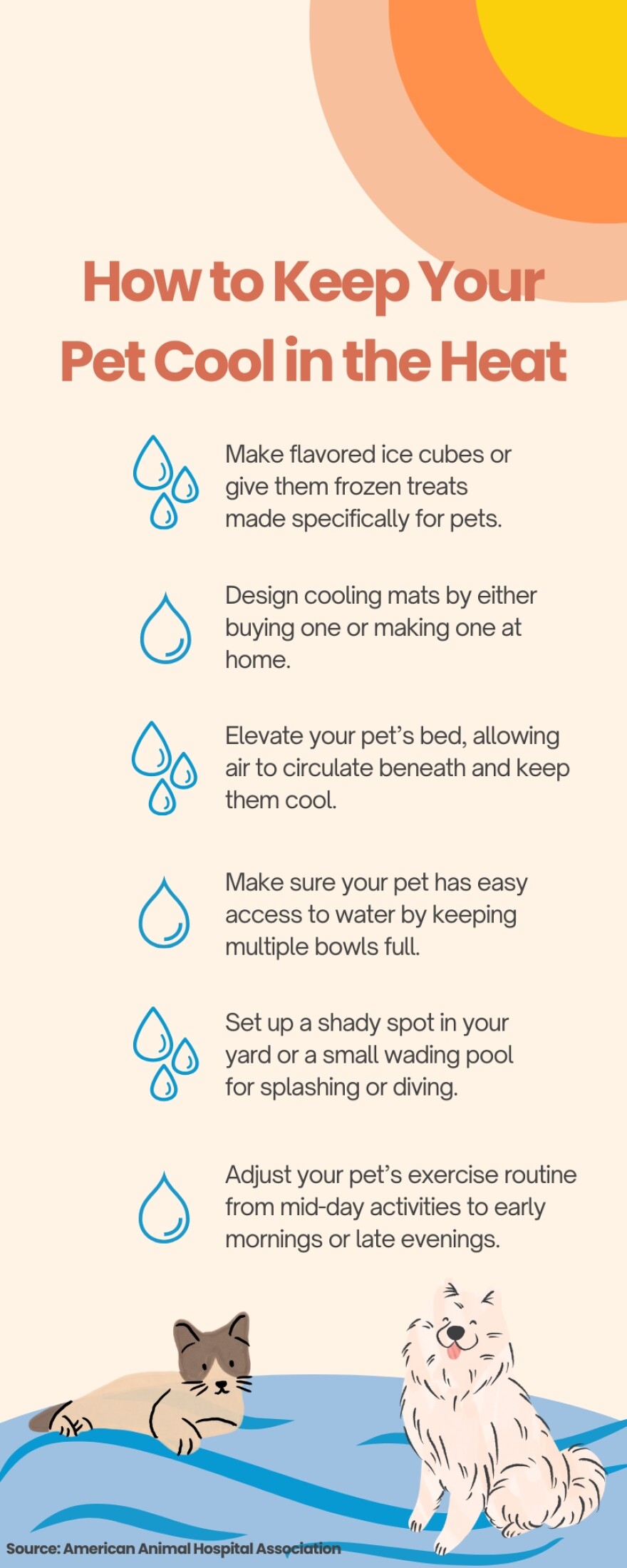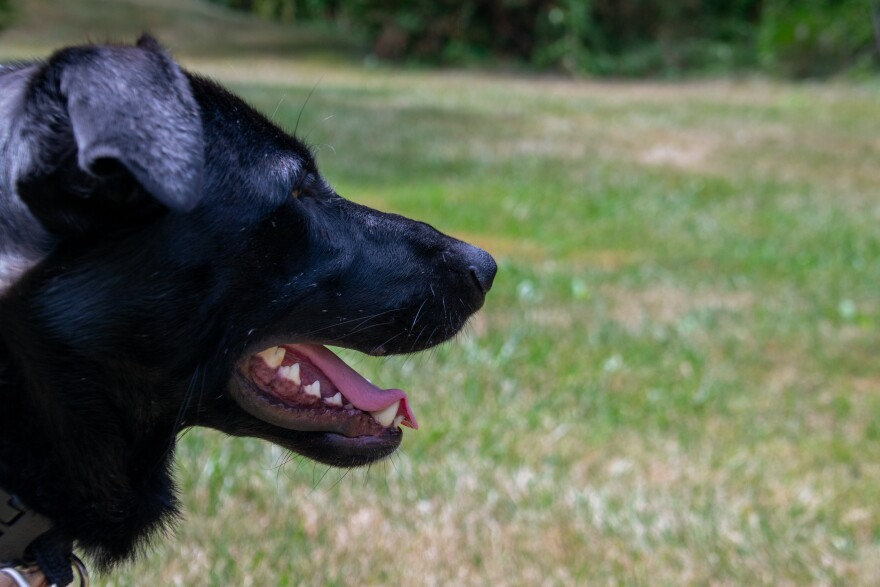The National Weather Service is predicting “dangerously hot conditions” this week, with increased humidity, putting both people and animals in danger of heat stroke or exhaustion.
Northeast Indiana Veterinary Emergency & Specialty Hospital (NIVES) has already seen a handful of cases in pets this summer. Dr. Logan Eicher said it’s important to know the signs of heat exhaustion and paths to treatment.

“Certainly bringing them into air conditioning would probably be the first step and if they don’t start to calm down with that then I’d say seeking veterinary care earlier than later would be the best route.”
Eichner said increased panting in dogs can be an indicator, but by itself may not be a sign of heat exhaustion. Checking a dogs gums for bright red or pink coloring is an indicator they’ve shunted blood flow to the periphery to try to cool themselves. In cats, any sort of open-mouthed breathing or panting is abnormal.
As heat exhaustion progresses, it can cause lethargy, vomiting or neurological changes.
“A lot of these dogs are gonna be happy-go-lucky dogs,” Eicher said. “If they come in and they’re not really picking their head up, but they’re just kind of laying there not really interested in getting up, moving around, things like that.”
Dr. Steve Thompson is a clinical professor in small animal primary care at Purdue University. He said if your dog is panting a lot and seems to be stumbling or unsteady on their feet, that can also be an indicator of heat exhaustion.
“If they’re unsteady, they’re probably, definitely having more trouble getting oxygen to their brain because they’re panting,” he said. “And that’s not an efficient way to get oxygen.”
Thompson also suggested trying to get an accurate rectal temperature before driving to an emergency vet, because a vet will often ask first.
“We don’t try to do it orally because if they bite down on the thermometer that doesn’t always go well,” he said.
A typical temperature for dogs is usually higher than humans, around 101 to 102 degrees Fahrenheit. Thompson said when dogs get to 104, that’s when it’s a worry and heat stroke is typically around 105 to 106.
Short-snouted dogs, or brachycephalic, are at higher risk for heat stroke in the summer because they move less air through their noses.
Some early signs of heat exhaustion in pets can be excessive panting and bright red gums, if it progresses it can cause vomiting or lethargy. If a pet gets to this point, the best option is to call your vet or take them to an emergency vet.

Dogs that usually get walks in the middle of the day or the early evening should instead be walked early in the morning or late at night, when the sun isn’t at its peak. Thompson said it can be hard to disrupt a dog’s routine, but it’s necessary to make sure any long walks are happening early in the morning or after dark.
“I think sometimes people think ‘well, we’re gonna do fetch with my black Lab at the same pond that we’ve always gone to,’ but the water temperature may now be 80 some degrees in the pond,” Thompson said. “You know that still is not a good mix to decide to do that after work at six o’clock.”
If you suspect your pet may be overheating, Thompson suggests cool water, not ice cold because it can cause a shock to the system, and avoid wet towels as they can trap body heat inside. He also said to make sure to cool the car down before putting a pet inside if it does need to go to a vet.
The most important thing to remember is to keep your pets cool before they get to the point of risking heat exhaustion or heat stroke.
“It doesn’t take that long with the high heat index, with these 90-plus days that are ahead of us,” Thompson said. “We really don’t want to put dogs in that position to where they’re going to get heat stroke.”
In the summer, it may be tempting to shave or over-groom pets with a lot of fur, but Dr. Vishal Patel, a vet-in-training at Humane Fort Wayne, said doing so can actually be more dangerous for the animal.
"Specifically, dogs and cats with double-coats,” he said. “Because double-coat acts as insulation. So, if you take it out, then they will not be able to thermoregulate.”
For dogs or cats left at home without central air conditioning, Patel suggests keeping curtains closed, fans on and making sure pets have access to plenty of water sources throughout the home.


